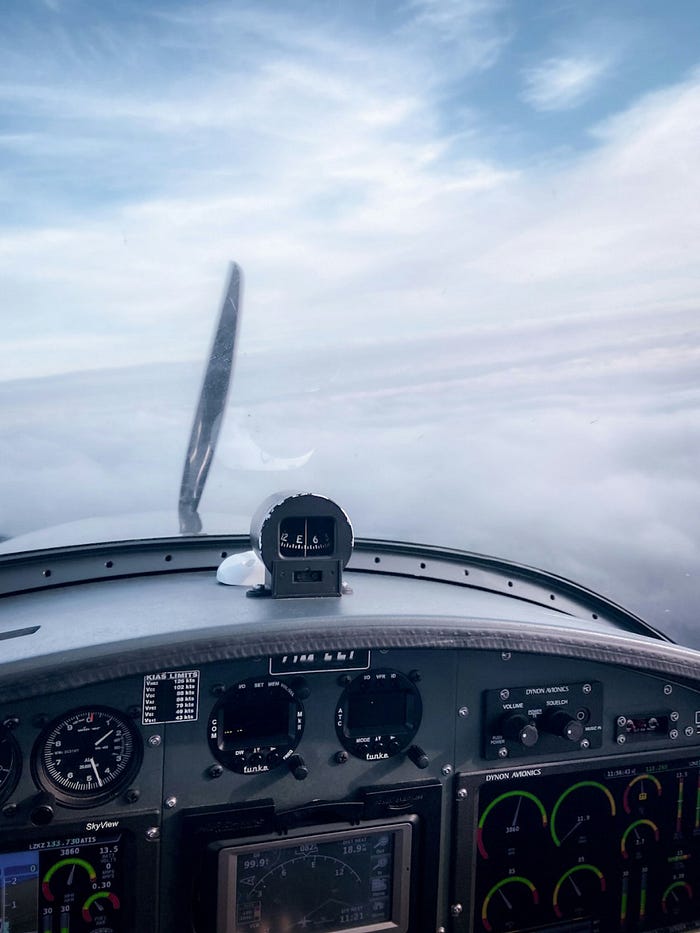Understanding Airmanship: The Key to Safe Aviation Practices
Written on
Chapter 1: The Essence of Airmanship
In every field, a professional code of conduct exists, and in aviation, airmanship epitomizes the qualities that define an exemplary pilot. Exceptional aviators merge their skills and expertise with sound judgment, always aiming to improve their safety and awareness in the skies.
Airmanship encompasses the skills, knowledge, and attitudes essential for safe and efficient flight operations. This term embodies a wide array of competencies, primarily reflecting a pilot's capacity for sound decision-making, maintaining situational awareness, and effectively managing risks in ever-changing flight conditions. It combines both art and science, demanding technical skill, emotional intelligence, and self-discipline.
At the core of airmanship is competence, which indicates a pilot's command over technical skills. This includes a thorough understanding of aircraft systems, aerodynamics, weather conditions, and navigation techniques. Pilots must adeptly handle various aircraft types, perform both basic and advanced maneuvers, and respond aptly to diverse flight scenarios. However, technical expertise alone is insufficient.
Situational awareness is another vital component of airmanship; it involves the ongoing perception of environmental variables that influence flight safety. Pilots need to continuously observe their surroundings, the weather, air traffic, and their aircraft’s performance. This heightened awareness enables them to foresee potential dangers and make proactive choices, thus minimizing accident risks. Airmanship transcends mere technical skill; it is profoundly connected to the human aspect of aviation.
Emotional intelligence is crucial; a pilot with strong airmanship remains composed under pressure, and effective communication is essential. Whether collaborating with a co-pilot, air traffic control, or ground crew, clear and precise communication ensures that all team members are synchronized and focused on the shared objective: safe flight operations.
A significant part of airmanship is risk management. Flying is inherently risky, but skilled pilots can evaluate and mitigate these risks through thorough planning and decision-making. This includes assessing weather conditions, aircraft performance, and fuel management to guarantee that each flight operates within safe parameters.
Discipline is also critical in this context. Pilots must consistently follow standard operating procedures (SOPs), regulations, and checklists. This adherence minimizes the chances of human error and promotes uniformity in flight operations.
A hallmark of effective airmanship is the openness to self-assessment and the pursuit of improvement. Pilots who adopt this outlook remain vigilant and ready to tackle any challenges that may emerge during flight. A significant aspect of this journey involves learning from mistakes—both personal and collective within the industry. Pilots must acknowledge their actions and remain receptive to constructive criticism. By reflecting on errors and near-misses, they foster a safety culture that benefits all aviators.
Airmanship stands as a fundamental principle in aviation, encapsulating the technical skills, emotional intelligence, discipline, and commitment to ongoing learning necessary for secure flight operations. Despite the substantial advancements in aviation technology, airmanship remains an indispensable factor in guaranteeing that every flight is conducted safely and effectively.

Section 1.1: The Role of Weather in Airmanship
Understanding weather patterns is crucial for pilots, as they directly impact flight safety and decision-making.
This video, titled "Private Pilot Ground School. Chapter 6, Section B: 'Weather'", delves into the significance of weather in aviation and how pilots can effectively navigate changing conditions.
Section 1.2: Mastering Flight Instruments
Proficiency in flight instruments is essential for maintaining situational awareness during a flight.
In the video "Lesson 6 | Flight Instruments | Private Pilot Ground School", viewers can learn about the critical instruments that aid pilots in making informed decisions in the cockpit.